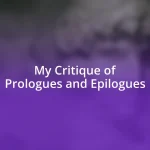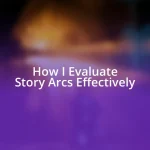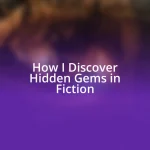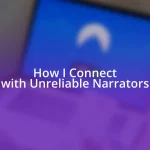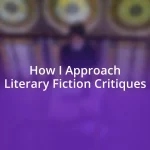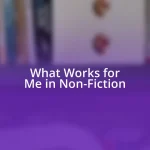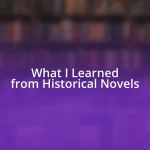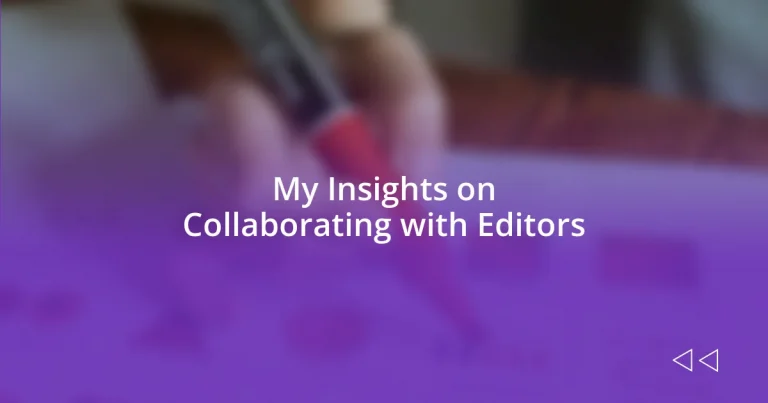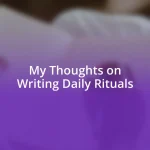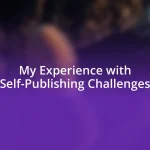Key takeaways:
- Collaboration with editors enhances clarity, balances unique voice with structure, and provides valuable insights that build writer confidence.
- Effective communication, built on trust and transparency, is essential for a productive writer-editor relationship and allows for meaningful exchanges during the editing process.
- Setting clear expectations and guidelines, alongside providing constructive feedback, leads to a cohesive and polished final product that effectively resonates with the audience.
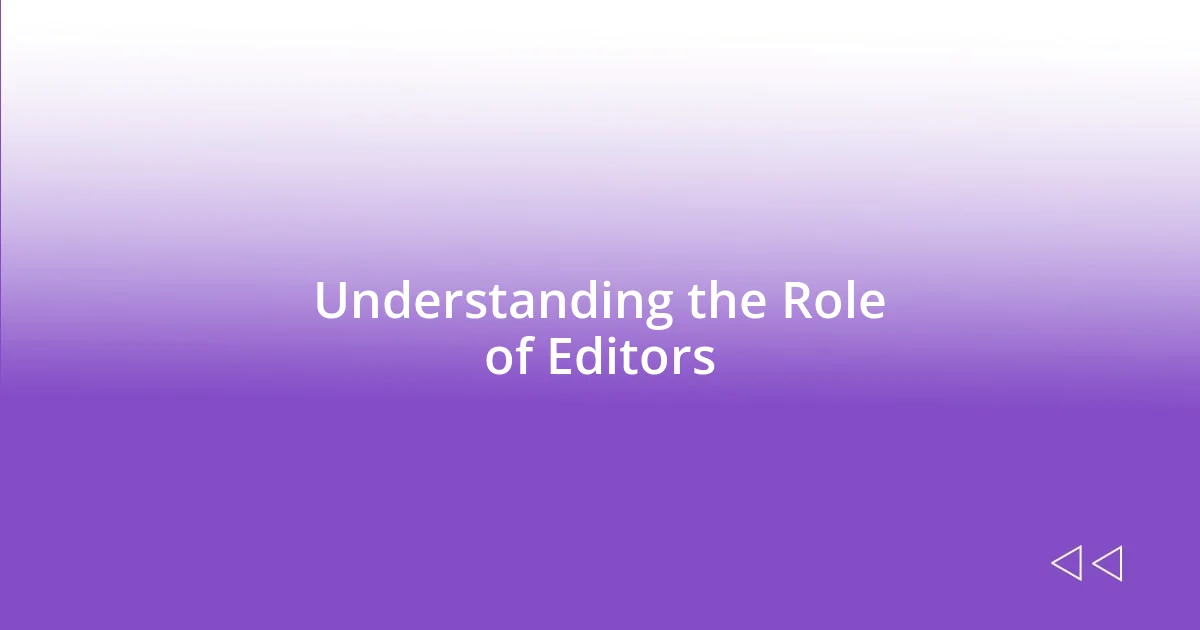
Understanding the Role of Editors
Editors play a crucial role in shaping the narrative of a piece. Their keen eye for detail often brings clarity to what can sometimes be a jumbled mess of thoughts. I remember when I submitted my first article; the feedback from my editor was both eye-opening and humbling. It made me realize how someone else’s perspective can highlight the strengths and weaknesses in my writing I hadn’t seen.
What truly amazes me about editors is their ability to enhance a writer’s voice while ensuring clarity and cohesiveness. Sometimes, I find myself wondering how they manage to balance preserving my unique style with the need for structure. For instance, an editor once suggested a small change in my opening paragraph, and that tweak transformed the entire article’s flow. It was a profound lesson in the collaborative nature of writing.
Editors also serve as a bridge between the writer and the audience, understanding what resonates. Have you ever felt unsure about how your work would be received? I often do, until an editor steps in with insights into target readership preferences. Their guidance not only boosts my confidence but also deepens my understanding of effective communication, turning a solitary endeavor into a more communal experience.

Benefits of Collaboration with Editors
Collaboration with editors brings about numerous benefits that can significantly improve a writer’s work. One of my favorite aspects of this partnership is how editors can streamline my thoughts and ideas. For example, during a recent project, my editor helped me cut down needless jargon, making my content accessible to a wider audience. That experience reinforced the importance of clarity—something I continually strive for in my writing.
Here’s a quick list of benefits I’ve observed from working with editors:
- Enhanced Clarity: Editors refine ideas, making them easier to grasp and more engaging for readers.
- Balancing Voice and Structure: They help maintain my unique style while imposing a structure that guides the reader.
- Expanded Perspectives: Editors provide insights that can transform my approach to topics I thought I understood thoroughly.
- Confidence Boost: Their feedback often reassures me, helping to alleviate that nagging worry about whether my content resonates.
Each interaction with an editor feels like a stepping stone in my growth as a writer, and that realization keeps me coming back for more collaborative efforts.
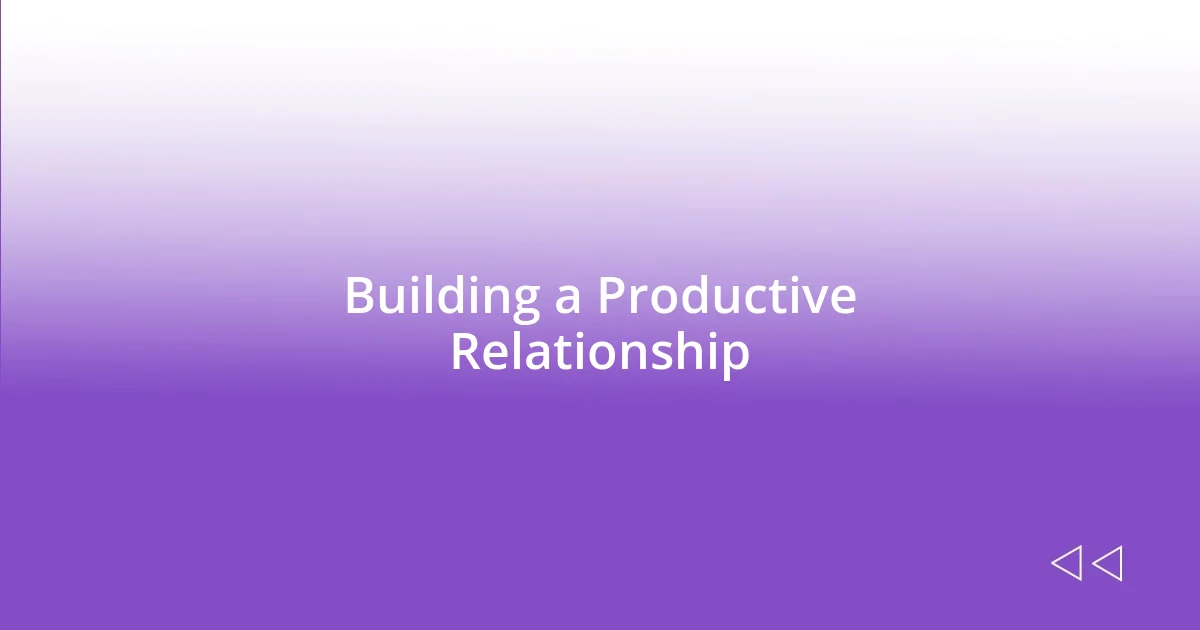
Building a Productive Relationship
Building a productive relationship with an editor is essential for any writer. I remember the first time I really connected with an editor—there was an instant understanding of where I wanted to go with my piece. It was refreshing to have someone who not only challenged my ideas but also appreciated the passion behind them. That rapport turned our collaboration into a creative dialogue rather than just a transactional process.
Trust is a cornerstone of this relationship. When I respect an editor’s expertise, I find it easier to embrace their feedback, however tough it may be. For example, one editor was particularly forthright about a section I loved—cutting it completely. Initially, I felt defensive, but ultimately, I could see the value in their perspective. This balance creates an atmosphere where constructive criticism is welcomed, leading to a better final product.
Regular communication also plays a pivotal role in nurturing this relationship. I’ve learned that discussing my writing goals and any concerns with my editor fosters transparency. Once, I shared that I wanted to experiment with a more informal tone, and my editor was quick to adapt without losing the essence of my message. This open dialogue has not only strengthened our partnership but has also significantly improved my writing process.
| Key Element | Importance |
|---|---|
| Understanding | Fosters a creative dialogue between writer and editor |
| Trust | Enables embracing feedback for growth |
| Communication | Encourages transparency and adaptability in the editing process |
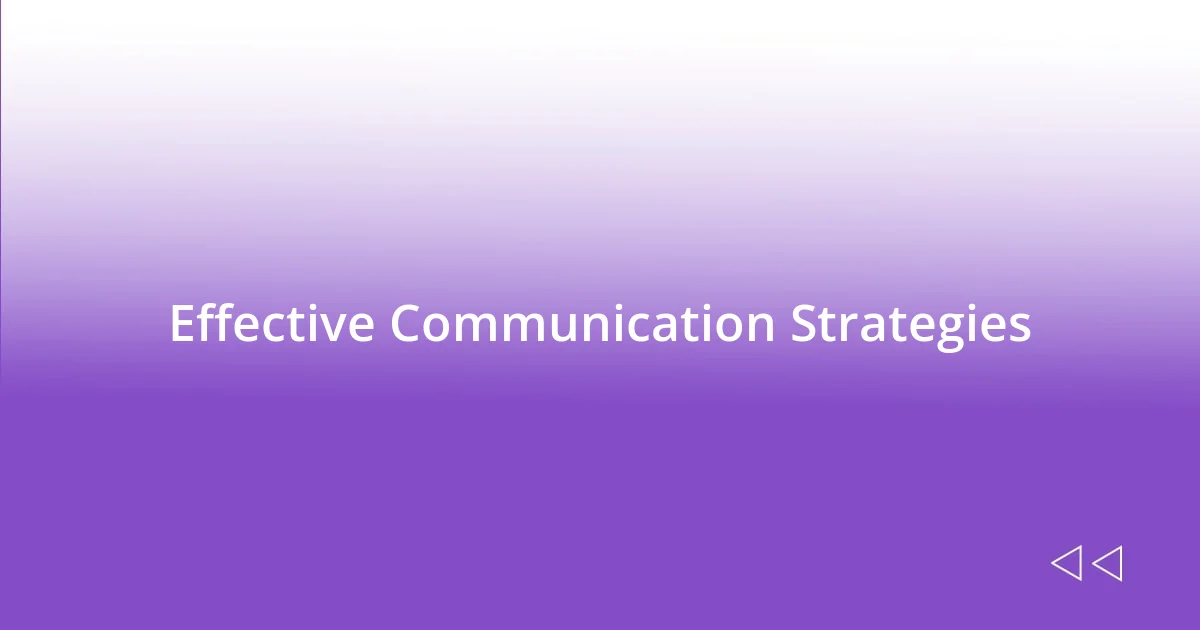
Effective Communication Strategies
Effective communication is the backbone of any successful collaboration with an editor. I recall a project where I felt overwhelmed by the number of revisions suggested. Instead of shutting down, I decided to set up a quick call with my editor. During that conversation, I laid out my vision for the piece, and to my surprise, we found common ground. That dialogue not only clarified our goals but also transformed the editing process into a meaningful exchange rather than a series of corrections.
Listening is just as crucial as sharing your own thoughts. I once had an editor who truly listened to my hesitations about certain edits. Instead of pushing their agenda, they took the time to understand my concerns. This gave me space to express my ideas—an important step in fostering trust. When an editor actively engages with my perspective, it creates a genuine partnership where both of our voices are heard. Isn’t that what we all seek in collaborative work?
Ultimately, consistency in communication helps maintain momentum throughout the editing process. There have been times when my editor and I would check in with each other mid-project, discussing what’s working and what’s not. These ongoing conversations keep both parties aligned and invested in the outcome. I’ve learned that approaching each interaction with curiosity and openness paves the way for breakthroughs. Every exchange feels like adding another piece to the puzzle that ultimately reveals a clearer picture.
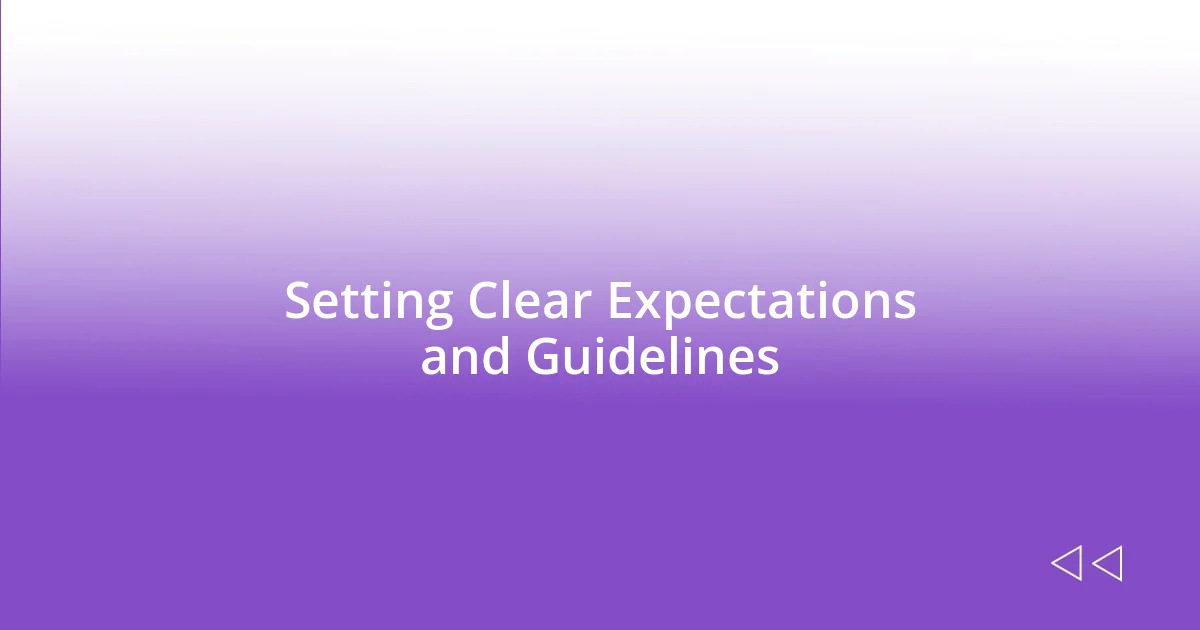
Setting Clear Expectations and Guidelines
Setting clear expectations and guidelines with an editor can transform the entire collaboration. I remember a time when we established a detailed outline before diving into edits. By doing so, we both knew what the main focus points were, which minimized miscommunication later on. Have you ever launched into a project with a vague direction? It can lead to frustration for both parties, so clear guidelines act as a roadmap, ensuring that everyone is on the same page.
Another crucial aspect is discussing deadlines upfront. I’ve had instances where tight timelines led to chaotic revisions. By clearly outlining timelines together, we could plan our workflow and allocate time for feedback effectively. This clarity not only empowers the editor to provide thorough input but also helps me deliver my best work without feeling rushed. Doesn’t it feel reassuring to know that both you and your editor share the same deadline?
Finally, establishing the tone and style guidelines from the outset is essential. In one project, we agreed on adopting a conversational yet informative tone, which worked wonders for our audience engagement. As we progressed, those initial discussions about tone acted as a touchstone for every revision. I find that when both writer and editor reference these agreed-upon guidelines, it cultivates a cohesive voice throughout the piece. How often do you revisit those initial agreements to keep your work aligned?
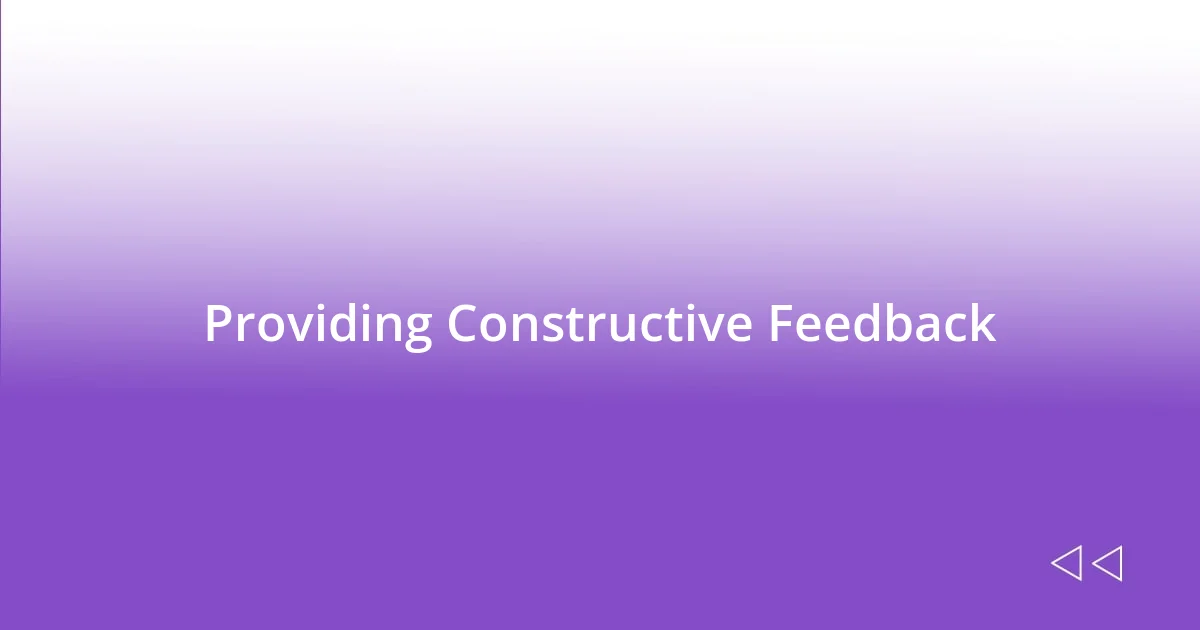
Providing Constructive Feedback
Providing constructive feedback isn’t just about pointing out flaws; it’s about facilitating growth. There’s a moment I recall vividly—receiving feedback that felt harsh at first. Instead of feeling discouraged, I took a step back and recognized the editor’s intent to elevate my work. By reframing that initial reaction, I learned that constructive criticism is an opportunity for refinement, often leading to a more polished piece.
When I approach editors with my feedback, I try to be specific and actionable. For instance, in my last collaboration, I noted that certain paragraphs felt off-topic and suggested reshaping them to align better with the overall message. This clarity not only guided my editor but also fostered an environment where constructive suggestions flourished. Have you thought about how clarity in your feedback could pave the way for productive discussions?
Finally, expressing appreciation is a small but powerful gesture. I remember wrapping up a project and thanking my editor for their thorough insights. Sharing a genuine compliment reinforces a positive collaborative spirit and encourages them to continue sharing their expertise openly. It’s amazing how such simple acknowledgments can enhance the working relationship, don’t you think? Feedback, when wrapped in support and positivity, can create a dynamic that benefits everyone involved.
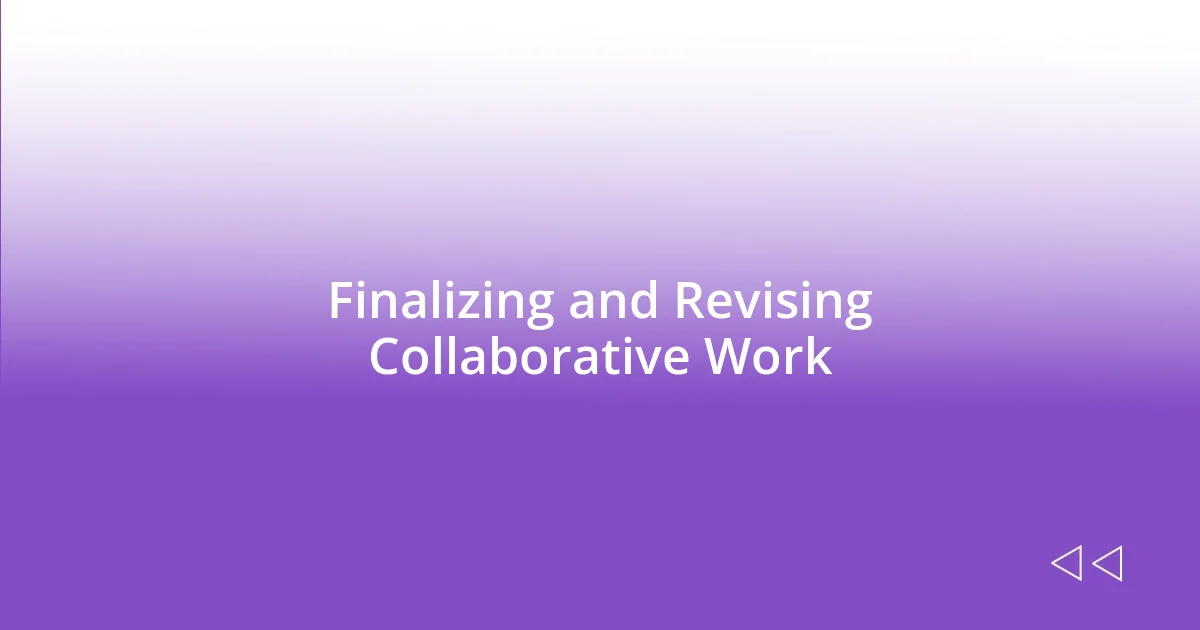
Finalizing and Revising Collaborative Work
Finalizing collaborative work really brings all the elements together. I still remember the electric feeling when we hit “send” on a project after several rounds of revisions. It felt like completing a puzzle. I learned that scheduling a final review call was a game changer for ensuring we were both satisfied. Imagine how frustrating it would be if we sent it off only to find that we still had lingering doubts!
During the final stages, I always advocate for a last-minute overview, checking not just for content but also for flow. Once, I caught a couple of instances where our voices were clashing due to different phrasing choices. We made those tweaks together, and it was incredible to see how even small changes could elevate the overall piece. Have you ever noticed how slight adjustments in wording can turn a good piece into a great one?
Revising collaboratively can bring up unexpected emotions—pride over our progress, but also vulnerability when exposing our work to an editor’s eye. I recall feeling a little anxious during a final review, unsure if we had captured the essence of what I wanted to convey. However, embracing that anxiety led to deeper discussions, and in the end, it resulted in a piece that truly resonated with our audience. Isn’t it fascinating how these emotional moments can shape our final output?
